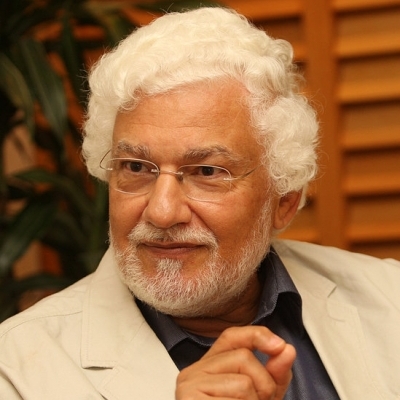



 Dr. Mohamed Elmasry
Dr. Mohamed Elmasry Generations of university graduates have been deliberately deprived of any encounter with Islamic civilization. It is nothing less than an egregious disservice to students — no educational institution can strive for excellence if it allows such a disservice to continue.
The situation at pre-university levels is even worse.
Any attempt to build a balanced curriculum is thwarted by vicious attacks from conservative educators. In his introduction to The Miseducation of the West, How Schools and the Media Distort Our Understanding of the Islamic World, Professor Joe L. Kincheloe says, “Little elementary or secondary school material devoted to ... contextualizing the Islamic world and its relation with the West appeared in the first two years after the tragic events of 9/11.” On the contrary, Professor Kincheloe notes, right-wing educator Chester Finn’s Fordham Foundation put out a report appealing to American teachers, September 11: What Our Children Need to Know.
In his report, Finn reflects “the viewpoints of the Bush administration on how to properly educate American [children] about the Islamic world [illustrating] the traditional Western tendency to promote its own moral, political, and cultural superiority whenever it has to deal with Muslim societies.”
In Confronting Islamophobia in Education Practice different authors have documented Islamophobia within the educational systems of the US, Canada, Britain, Germany, Italy, Holland, Australia, and Israel. Each identifies a good number of concrete steps that can be taken in the classroom. Typical is the overall suggestion to “alter educational environments to make them more respectful of Islam, its history, Islamic culture and Muslim students. The end result will be a broader view of the world in which we live but — more especially — a safer learning environment for all students.”
In the same book, Professor Lor-raine Sheridan says that psychology studies related to racial discrimination and prejudice outnumber similar work on religious discrimination and prejudice by eighteen-to-one and “virtually none has specifically examined the experiences of Muslims. [But] Islam-ophobia rose markedly after the events of September 11th. To what extent, cannot be measured because there is no pre-September 11th baseline.”
Also in the same book, Robin Richardson tells of Islamophobic teacher attitudes. When one teacher suggested a discussion group on Islam, another teacher objected, “We’d just be letting al-Qaida in the back door.”
When one parent expressed concerns about TV footage from Iraq, her child’s teacher said, “Yes, a lot of the children seem quite upset. But they’ll soon get over it. They don’t really understand, you know. Don’t worry.”
In a chapter called 'The Subtleties of Prejudice: how schools unwittingly facilitate Islamophobia and how to remedy this', J’Lein Liese says that as a “consequence of the current ‘war on terror,’ Islamophobia is rising in US schools,” and identified five levels of reaction: (1) verbal slurs, (2) avoidance, (3) discrimination, (4) violence, and (5) murder. She then proposes two key approaches to minimize school Islamophobia: (1) Diversity or adversity — promoting respect amid a culture of fear, and (2) Dismantling prejudice and racism.
In the classroom, Liese observes, “there are two types of bigots: the active bigot and the timid bigot. Active bigots are easiest to identify because their actions are usually overt and demonstrated through both their verbal and active behavior. Their racist behavior can be expected and they are unlikely to try and hide. The timid bigots will not act on their belief unless their peers take action first. The key for educators is to prevent timid bigots from acting on their attitudes while at the same time challenging these attitudes.”
Barry van Driel, an anthology editor, aptly captures the challenge facing educators today: how to positively define a secular education system in the West “as protecting the religious beliefs of all communities without favor and exposing students to the many belief systems represented in classrooms today.”
J’Lein Liese ends her chapter by reflecting, “The US used to be called a melting pot. Today it is more like a flower garden and it is the different sizes, shapes and colors that make a garden beautiful. However, every garden has the potential to grow weeds. If these weeds are not removed, the garden will lose her beauty. Since 9/11, the US is at risk of developing the weeds of stereotypes, prejudice and racism and it is its Arab and Muslim youth who are likely to suffer.”
And The National Council for Social Studies asserts — as quoted by Beth Finkelsteine in her chapter Practical Educational Programming that Confronts Islamophobia — “Knowledge about religions is not only characteristic of an educated person, but also absolutely necessary for understanding and living in a world of diversity.”
Finkelsteine refers to the innovative Three R’s program in California and Utah, which seeks to advocate the role of religion in the curriculum. She says that a major challenge is working with educators who are fearful about addressing religion with their students, and feels that what is most needed is teacher training beginning with a focus on the legalities involved with religion in public school, including the First Amendment of the US Constitution. A measure of success is “in the classroom the children generate themselves rules such as: treat others as you want to be treated, cooperate with others, and be sure of yourself.”
(Dr. Mohamed Elmasry is national president of the Canadian Islamic Congress. He can be reached at np@canadianislamiccongress.com)
